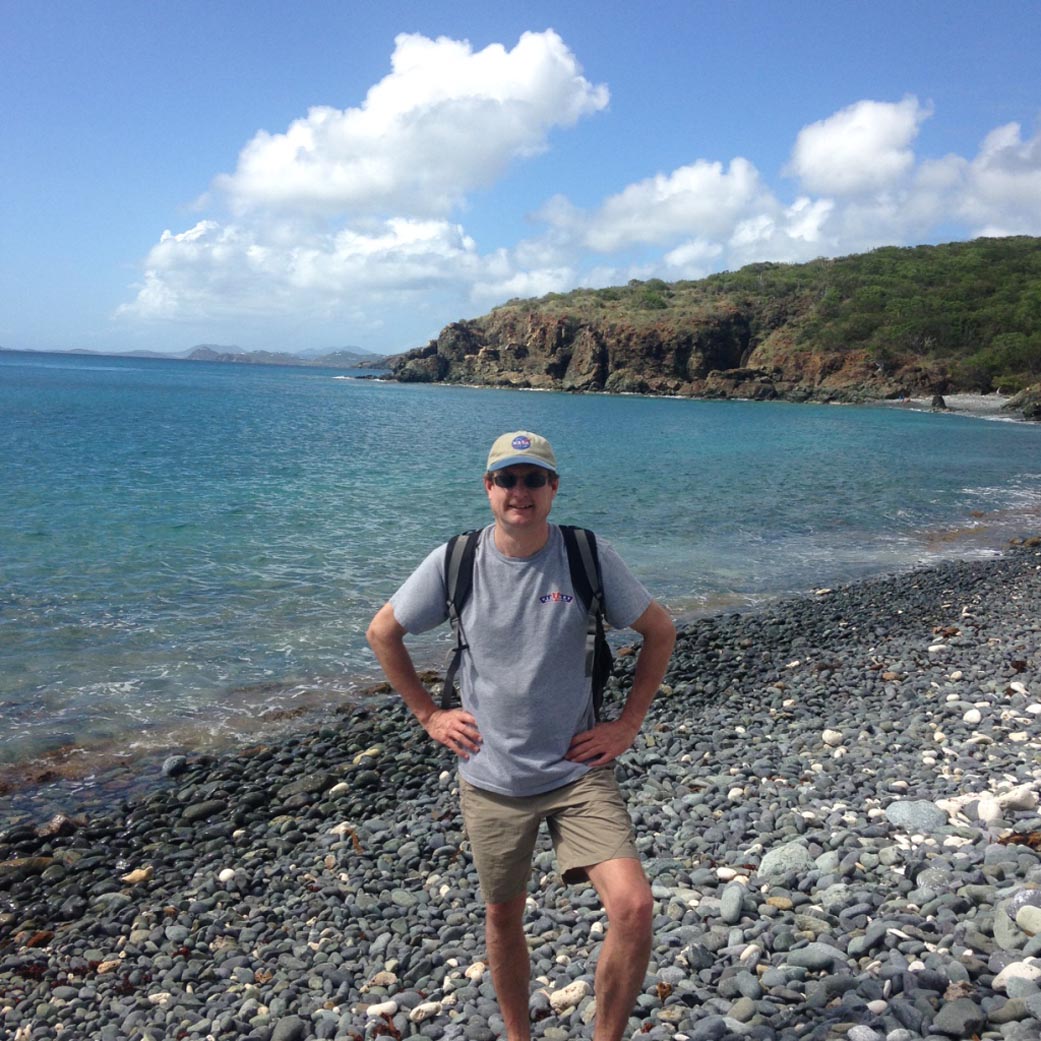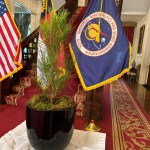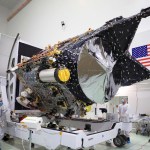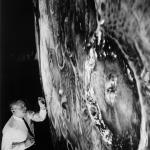Name: Jim Busch
Title: ICESat-2 Ground Systems Manager
Formal Job Classification: Ground systems engineer
Code: 425, Ice Cloud and land Elevation Satellite-2 (ICESat-2)
Jim Busch finds victory in engineering and home brewing.
What does your job at Goddard entail?
I’m the ground systems manager for ICESat-2. I’m six years in, and it’s been great because the team is awesome. The mission itself is fantastic. We’ll be measuring the height of Earth’s ice sheets to monitor melting and other changes. The ground systems will support the satellite when it launches. As the ground systems manager, my main goal here is to deliver a cost-effective ground system that meets the mission needs so we can leave more money for science. You have to understand how everything fits together, where the focus needs to be and where the risks are.
What do you like the most about working at Goddard?
It’s funny — you blink, and 20, 30 years go by. But that’s what is nice about working here. It’s a great place to be. There are a lot of other things you can do in life, especially with engineering. But at the end of the day, life is short, and I wanted to do something that makes a difference over time. The other thing that’s so rewarding about Goddard is that you have so many smart people from different disciplines pulling together to make projects work.
What is a typical day on the job like for you?
All the projects have a rhythm. You have weekly staff meeting, and you have all your vendors that you talk to at weekly or monthly tag-ups. You want to make sure everyone’s on cost and schedule. For ICESat-2, we’ve developed enough of the components that now we have to put it all together and test it from end to end.
What keeps you coming back to Goddard every day?
I’ve had such a great career here. I’m very much looking forward to being at Vandenberg Air Force Base in California next November, when ICESat-2 will launch. I’ve never been to a launch, since I had never been on a program from start to finish. I look forward to being at the launch site and watching as that Delta II carries ICESat-2 into orbit.
What sparked your interest in engineering?
It was kind of a process of elimination. I was in the business school at Maryland, but I didn’t like it. It didn’t motivate me, and I ended up drifting toward the sciences. Two years in, I tried to transfer to the engineering school. At the time, Maryland was cutting down the number of applicants and raising the bar. I graduated three years later with a degree in electrical engineering. After a brief stint at the Patent and Trademark Office, I managed to get a job at Goddard, and I’ve been here since 1988.
I heard that outside of work, you enjoy brewing beer. How did you get into home brewing?
I had a friend who was into brewing. Back then, there weren’t many home brewers. As I tasted his homebrew, which was pretty good, I thought, if he could do it, I could probably do it too.
For Christmas 1988, the same year I started working at Goddard, my mom went to the local homebrew shop and bought me the equipment and an ingredient kit. Three days after Christmas, I brewed my first batch of beer, and that following year in 1989, I brewed 45 batches of beer. I brought my beer to a homebrew club that I joined for feedback and critiques. Before long, people were flocking to my beer.
Eventually, your passion for home brewing led you and your friends to launch a brewery. What inspired you all to take that risk?
At a homebrew meeting, I met Ron Barchet. I became tight friends with Ron and his childhood friend, Bill Covaleski, in the late ’80s. Ron became a brewmaster at Dominion Brewery in Virginia, and Bill became the brewer at Baltimore Brewing Company. We would meet up at one of the breweries and learn from each other. One day, they showed up with this schematic of a brewery and said to me, “We want to open this brewery.” We were 28 years old. I became one of the first investors, and some other people from the homebrew club wrote checks too.
So, we launched Victory Brewing Company. We made it through the hard years in the late ’90s and early 2000s, and we became the microbrewery of the Philadelphia region — and we still are today. We’re making about 150,000 barrels a year right now, which makes us the 29th largest craft brewer in the country.
What is the science behind brewing?
Brewing is a cool thing because it’s a mix of science and art. Coming up with a new recipe is an artistic endeavor, but repeating that recipe consistently takes a real scientific approach.
How do you find a balance between your work at Goddard and at Victory?
I’m a typical type-A. I get obsessive about hobbies, and I pursue them to the max. It’s important to live with passion. Find a passion, and pursue it. I need to feed my passion and keep my day job. Both choices have turned out perfectly. I don’t know what the future holds, but I’ve had a terrific career so far.
By Elizabeth M. Jarrell
NASA’s Goddard Space Flight Center, Greenbelt, Md.

Conversations With Goddard is a collection of Q&A profiles highlighting the breadth and depth of NASA’s Goddard Space Flight Center’s talented and diverse workforce. The Conversations have been published twice a month on average since May 2011. Read past editions on Goddard’s “Our People” webpage.
































